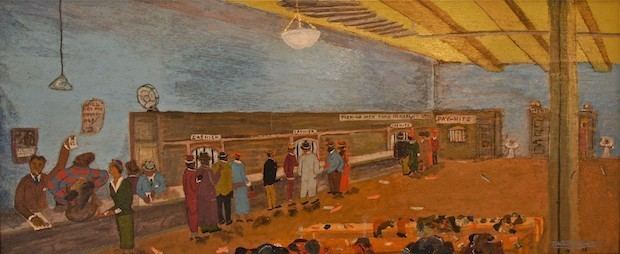Died 1977 | ||
 | ||
Walter Ellison (1899–1977) was an African American artist, born in the state of Georgia. Although the war ended in 1865, there were many problems for African Americans at the turn of the century, and so many African Americans left the South and moved North in search for better opportunities, Ellison was one of them.
Contents
Early life
Ellison was 18 years old when the United States decided to enter World War I in Europe in 1917 and immigration from Europe to the United States virtually stopped. And because of that between 1916 and 1970 seven million African Americans left the South to the North, and about half a million of them went to Chicago looking for jobs. Walter Ellison boarded the train to Chicago in the early 1920s in search for education and jobs.
Ellison studied at the Art Institute and started painting, and he became involved in the Civil Rights Movement.
Art and work
Walter Ellison is best known for intimately scaled works that reveal the private lives and shared experiences of African Americans who moved to northern cities from the rural South during the Great Migration between World War I and II.
Born in Eatonton, Georgia, Ellison—according to census and draft records—was a farm hand when he and his family came to Chicago. He attended classes at the School of the Art Institute of Chicago (SAIC) and at Hull House. Ellison was employed on the Illinois Art Project of the WPA and was a founding member of the South Side Community Art Center, with a number of younger black artists, including Margaret Burroughs, Eldzier Cortor, Gordon Parks, Charles Sebree, and Charles White.
Paintings
Ellison's most famous painting, Train Station, resides in the Art Institute of Chicago.
A french manicure in 1937 Ellison's paining
In his painting that he created in 1937, Ellison's art showed red candy-striped fingernails in his oil on canvas. A woman’s fingertips massaging another’s temples, the recipient with her eyes closed, her mind probably millions of miles away from whatever was troubling her this day in 1937.
